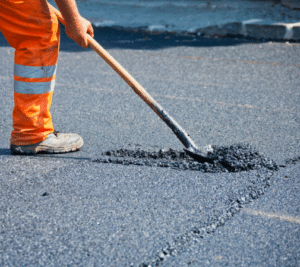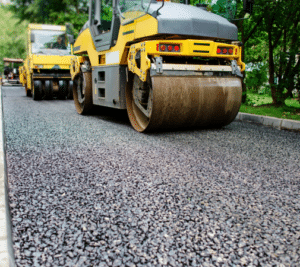Concrete is heavily used in construction all over the world. It’s a durable compound made to be strong and withstand weight and wear. Several factors go into how strong concrete is. The strength of concrete is highly important to how well it will function under stress and wear. Many structures need a high level of concrete strength for stability and structural integrity. When you’re getting ready to use concrete, it’s essential to consider the factors that can make it stronger and weaker.
The Ingredients of the Concrete
The main ingredients that go into making concrete include sand, water, aggregate, and cement. It’s important to pay attention to the quality of each of these ingredients to make the resulting concrete stronger. Each of these four ingredients should be of good quality, including the water. The cement should be present in large quantities and should be of a high grade. Cement is graded with higher numbers corresponding with stronger cement.
It’s also important to pay attention to the quality of the water. If the water has a lot of impurities, this will affect the strength of concrete by weakening it. Never use water that is salty or that contains silt or oil. Use potable water so that it is pure and free from impurities that can later lead to corrosion and a shorter lifespan for the concrete.
The Ratio of Water to Cement
The weight of the water that’s used in comparison to the cement weight is known as the water/cement ratio. This is one of the most important ways to control concrete’s strength. Higher concrete strength requires a lower ratio of water to concrete. It’s easy to use too much water in the mix, which can create voids in the resulting concrete. It can also lead to segregation of the concrete. The ratio that is generally used is 0.45 water to 0.60 cement. This represents a good balance that leads to stronger concrete and meets IS code. To prevent breakage, stay at the correct ratio.
Weather and Temperature
The weather conditions where the concrete is placed have a lot to do with its strength. If the concrete is poured outdoors in an area with a cold climate, the concrete will repeatedly freeze and thaw because of weather changes. This freezing and thawing cycle can cause concrete to deteriorate. As the moisture content of the concrete changes, it can cause the concrete to expand and contract, creating cracks.
The temperature can also affect the strength of concrete when it changes rapidly. When the temperature of the concrete suddenly changes, this can result in a thermal gradient. This can cause cracking and chips to form in the concrete.
Concrete Compaction
The compaction of the concrete is a significant factor in how dense it is, dramatically affecting concrete strength. When concrete is compacted, the air voids in the concrete mixture are removed, creating more density and strength. When concrete is made up of 5% of air voids, this represents a significant reduction in the strength of concrete by anywhere from 30% to 40%. Two pieces of concrete with the same ratios of water to cement will be different in strength if one has been fully compacted and the other has not. The best way to create enough compaction is to use vibration.
Concrete Curing
Concrete has to be adequately cured so that it gains strength. The proper curing allows the concrete to prevent shrinkage and be stronger and more durable. When it is cured, it gets the best level of moisture as well as the right temperature throughout the concrete. When it is cured, the concrete will have enough water that the hydration process will be able to continue for more concrete strength. This hydration process must happen without it being interrupted during the curing. Concrete may be cured for anywhere from seven to 14 days. This allows the concrete to interlock better, affecting its strength.
The Age of the Concrete
As concrete gets older, it will have more hydration. This is the chemical reaction that happens between the cement and the water in the concrete. As it gets old, concrete will have more of the gel that allows its particles to bond together. This means that as concrete gets older, it gets stronger. While most people assume that concrete that is several years old is weaker than new concrete, the opposite is true. In fact, after 11 years, the concrete has double the strength that it did when it was new. This is true unless there are other factors that lower the strength of concrete.
The Shape of the Aggregate
The aggregate is an important part of the ingredients that go into concrete, and it comes in various shapes. There are rounded, irregular, flaky, elongated, cubical, and angular aggregates, among others. When the aggregate has rounded pieces, this can cause issues when the aggregate and cement paste need to bond together. When the pieces are angular, they can interlock better for more strength. Larger pieces of aggregate can also mean weaker concrete. Uniform grading of the aggregate also affects the strength, with well-graded aggregate being needed for the superior strength of concrete.
The Loading Rate
Concrete gets stronger when it has a high loading rate. With a high loading rate, there is less time for creep to occur. When creep is able to happen, this leads the concrete to be deformed permanently. When the loading is rapid, the concrete has better load resistance.
Call Us for Concrete Services
We’re highly experienced and ready to serve you when you need concrete services. Call us at Saguaro Asphalt to discuss your need for concrete and the scope of the project.



